Dogs have a habit of sniffing their environment. Your canine pet does this to gain information, identify things, and assess his surroundings. Whether you own a playful puppy or a laidback senior, allowing a dog to lead with his nose can stimulate his mind and positively affect his well-being. However, there are some instances in which pet parents should practise caution. This involves going on outdoor adventures surrounded by unfamiliar plants that may be toxic for their pets. Similarly, growing potentially dangerous flowers, fruits, and herbs at home should be avoided. Doing so gives your dog access to natural toxins that may cause a wide range of symptoms, from mild discomfort to irreparable organ damage.
Waldo’s Friends rounded up a quick guide to 10 popular indoor and outdoor plants toxic to dogs:

1 Snake Plants
Scientific name: Dracaena trifasciata
Family: Asparagaceae
Other common names: Good luck plant, golden bird’s nest, mother-in-law’s tongue, Saint George’s sword, and viper’s bowstring hemp
Distinguishing features: Stiff and upright green leaves in rosette (circular) form; some species have yellow or silver-white stripes on their leaf margins
Toxins present: Saponins
Effects on dogs: Drooling, nausea, vomiting, diarrhea, and ruptured red blood cells (in rare cases)
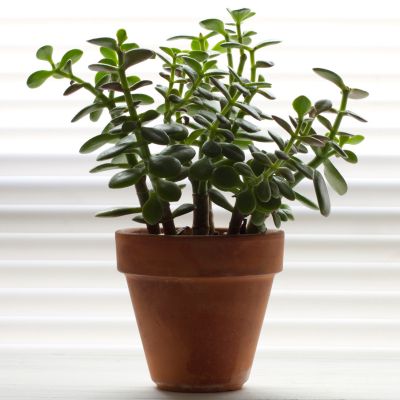
2 Jade Plants
Scientific name: Crassula ovata
Family: Crassulaceae
Other common names: Baby jade, Chinese/Japanese rubber plant, dollar plant, friendship tree, lucky plant, money plant/tree, and tree of happiness
Distinguishing features: Shiny, jade-coloured leaves with thick stems and branches
Toxins present: Unknown
Effects on dogs: Mild to moderate symptoms such as depression, gastric distress, incoordination, irregular heartbeat, and vomiting
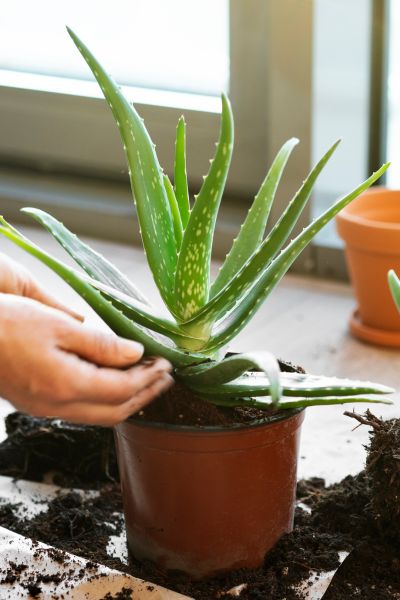
3 Aloe Plants
Family: Asphodelaceae
Other common names: Aloe vera (a widely known species), burn plant, and elephant’s gall
Distinguishing features: Tall, thick, fleshy leaves that follow a rosette form; the colour of its leaves may range from grey to bright green, or have mottled or striped patterns
Toxins present: Anthraquinones and saponins
Effects on dogs: Diarrhea, lethargy, low blood sugar, nausea, and vomiting
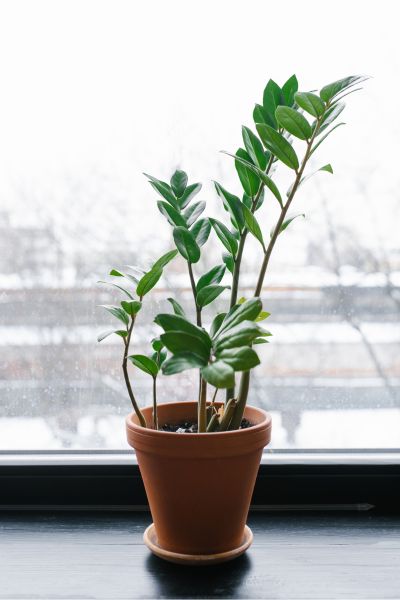
4 ZZ Plants
Scientific name: Zamioculcas zamiifolia
Family: Araceae
Other common names: Aroid palm, emerald palm, eternity plant, Zanzibar gem, and Zuzu plant
Distinguishing features: Glossy, upward-growing dark green leaves that resemble feathers
Toxins present: Calcium oxalate
Effects on dogs: Skin irritation (flaky skin, redness, or small bumps), burning sensation of affected areas, and gastrointestinal complications
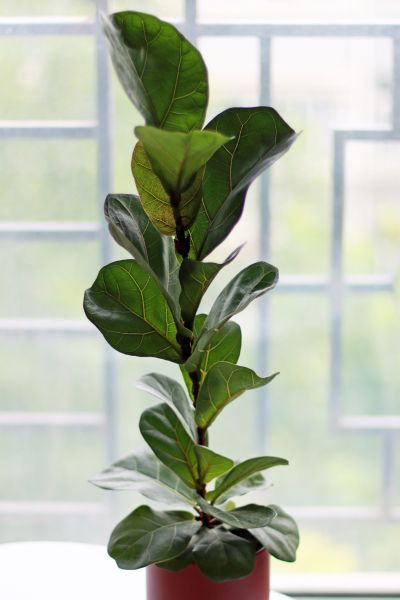
5 Rubber Plants
Scientific name: Ficus elastica
Family: Moraceae
Other common names: Indian rubber bush/tree, rubber bush/fig/tree, and weeping fig
Distinguishing features: Broad, oval leaves in deep green or maroon; some variants feature cream, pink, white, or yellow markings
Toxins present: Proteolytic enzymes and psoralen
Effects on dogs: Decrease in appetite, diarrhea, drooling, vomiting, and irritation of his eyes, mouth, and skin
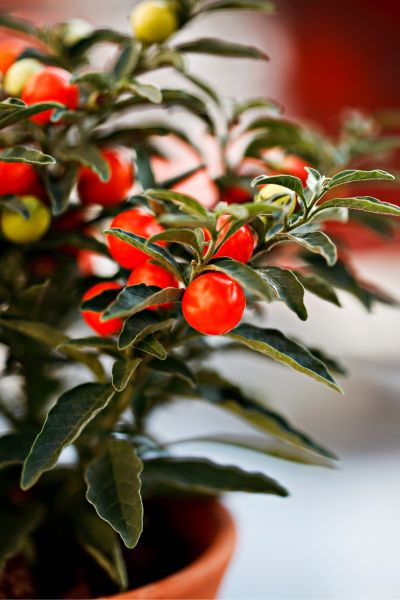
6 Tomato Plants
Scientific name: Solanum lycopersicum
Family: Solanaceae
Distinguishing features: Weak-stemmed plants bearing round juicy fruits, which are botanically classified as berries
Toxins present: Solanine
Effects on dogs: Hypersalivation, loss of appetite, depression, increased heart rate, incoordination, weakness, dilated pupils, slow heart rate, and severe gastrointestinal upset after parts of the plant or unripe fruits are eaten
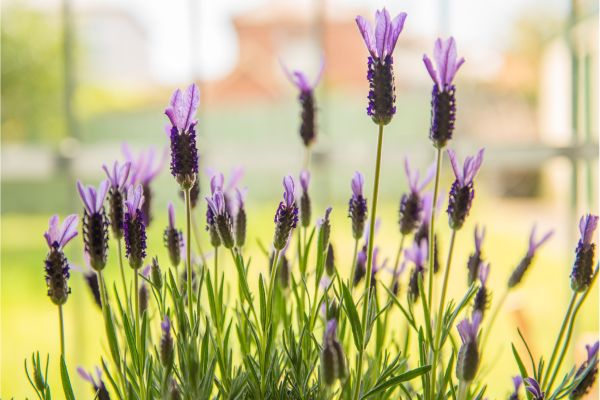
7 Lavender Plants
Scientific names: Lavandula (genus) and Lavandula angustifolia (widely cultivated species)
Family: Lamiaceae
Other common names: Common lavender, English lavender, French lavender, and true lavender
Distinguishing features: Tiny, sweet-smelling flowers growing on upright stems in lovely shades of blue, violet, or lilac
Toxins present: Linalool and linalyl acetate
Effects on dogs: Nausea, vomiting, decrease in appetite, intestinal blockage (if a large portion is consumed), and difficulty in breathing (if exposed to lavender essential oil)
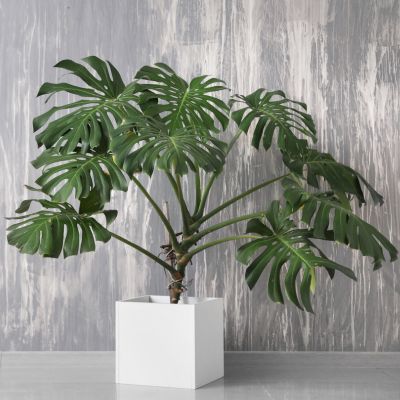
8 Monstera Plants
Scientific names: Monstera (genus) and Monstera deliciosa (popular species)
Family: Araceae
Other common names (for Monstera deliciosa): Ceriman, cutleaf philodendron, hurricane plant, Mexican breadfruit, mother-in-law, split-leaf philodendron, swiss cheese plant, and window leaf plant
Distinguishing features: Beautiful large-sized, deep green-coloured leaves decorated with holes
Toxins present: Insoluble calcium oxalates
Effects on dogs: Burning sensation and swelling of his oral cavity, over drooling, upset stomach, decreased appetite, vomiting, and diarrhea
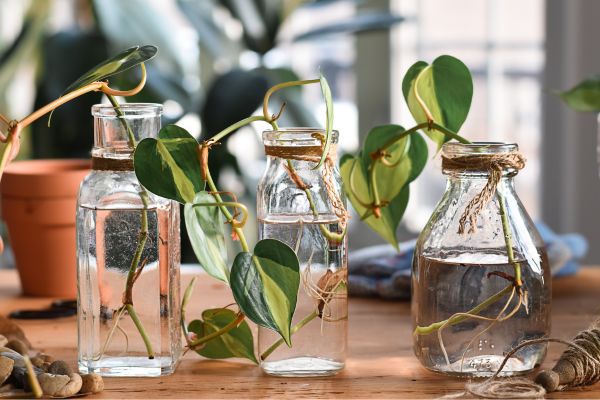
9 Pothos Plants
Scientific name: Epipremnum aureum
Family: Araceae
Other common names: Ceylon creeper, devil’s ivy/vine, golden pothos, house plant, hunter’s robe, ivy arum, marble queen, money plant, satin/silk pothos, silver/taro vine, and Solomon Islands ivy
Distinguishing features: Bright, waxy, heart-shaped leaves in green with light green, white, or yellow variegation
Toxins present: Insoluble calcium oxalates
Effects on dogs: Eye and oral irritation (intense burning and irritation of mouth, tongue, and lips), excessive drooling, vomiting, and difficulty in swallowing or breathing
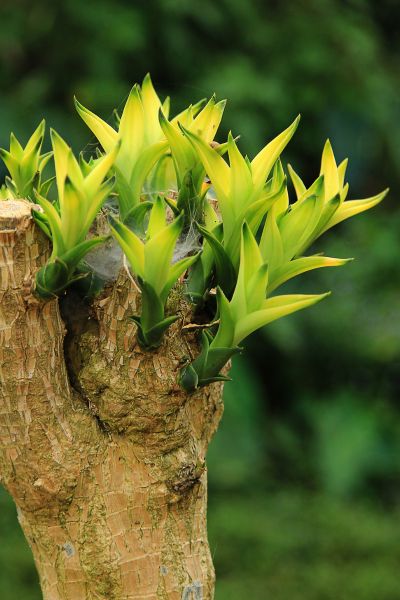
10 Corn Plants
Scientific name: Dracaena fragrans
Family: Asparagaceae
Other common names: Compact dracaena, cornstalk dracaena, striped dracaena, and ribbon plant
Distinguishing features: Long, wide, glossy green leaves in a narrow oval shape; some cultivars have variegated foliage
Toxins present: Saponins
Effects on dogs: Depression, hypersalivation, loss of appetite, vomiting (with blood, in some cases), intestinal blockage, and indigestion
Other reminders to keep your dog safe
Prevent accidents by steering clear of these poisonous plants whenever you spot them. As a safety measure, it’s best to make your pooch wear a harness when you’re out and about. This is highly recommended if he hasn’t mastered following your commands, or you simply want to control his movement.

If you’re keen on growing plants at home, get your veterinarian’s approval about the plants you want to nurture. Refrain from growing these 10 aforementioned toxic plants. That way, you don’t ever put your dog at risk. Plus, get tips on how to make your backyard pet-friendly by reading this blog post.
Leave a comment
Your email address will not be published. All fields are required.